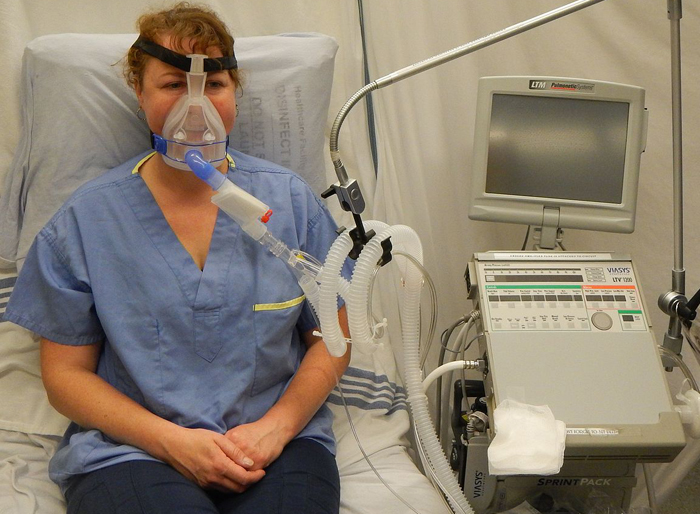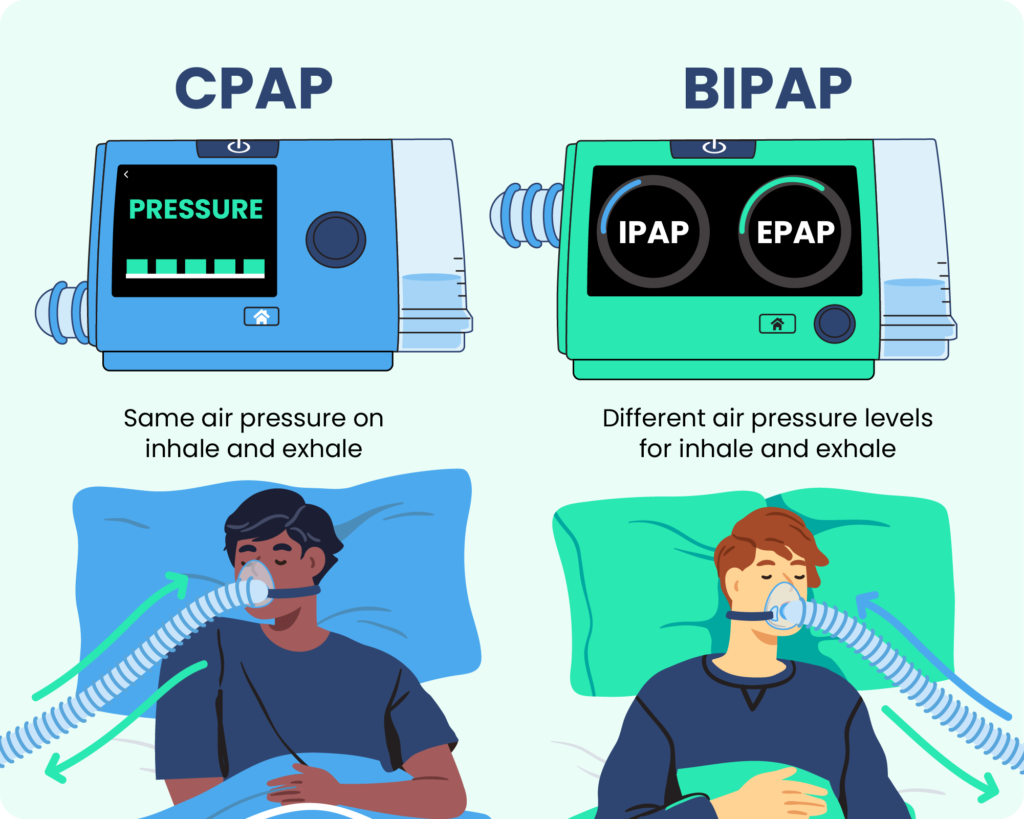Bipap vs. CPAP: Which Is the Best for Your Rest Problem?
When navigating the intricacies of sleep problems, the choice in between BiPAP and CPAP therapy is a crucial factor to consider. While CPAP supplies a steady air flow suitable for obstructive rest apnea, BiPAP's dual stress settings may boost comfort for those with more detailed respiratory problems.
Recognizing Sleep Disorders
Rest disorders include a series of problems that disrupt typical rest patterns, affecting both the high quality and duration of rest. These problems can manifest in different kinds, including sleep problems, sleep apnea, narcolepsy, restless leg syndrome, and parasomnias. Each condition provides special obstacles, usually leading to substantial daytime fatigue, cognitive impairment, and emotional disruptions.
Insomnia is defined by trouble dropping or staying asleep, while sleep apnea entails repeated disruptions in breathing throughout rest, often causing fragmented remainder. Narcolepsy, on the various other hand, is noted by excessive daytime sleepiness and unexpected sleep assaults. Uneasy leg disorder creates uncomfortable sensations in the legs, triggering an unmanageable desire to relocate them, which can additionally prevent the ability to fall asleep.
The effect of sleep problems prolongs beyond specific health, influencing overall productivity, partnerships, and high quality of life. Comprehending the particular nature of each problem is crucial for reliable medical diagnosis and treatment. As sleep wellness comes to be significantly acknowledged as a crucial part of total wellness, addressing these disorders is important for improving both rest quality and day-to-day performance.
Exactly How CPAP Works
Constant Favorable Airway Pressure (CPAP) therapy is regularly employed as a primary therapy for obstructive rest apnea (OSA) The device of CPAP includes the use of a maker that supplies a stable stream of air via a mask put on throughout rest. This airflow maintains positive pressure in the airway, stopping the collapse or obstruction of the throat that can happen during sleep.
When a client inhales, the CPAP equipment provides a constant flow of air, ensuring that the air passage stays open - BiPAP Rental. This not just relieves the signs and symptoms of OSA, such as snoring and disrupted sleep patterns, yet additionally lowers the connected health threats, including cardiovascular issues and daytime exhaustion
The stress settings on a CPAP device can be customized to meet private patient requirements, often determined via a rest research study. People normally go through titration research studies to find the optimum stress degree for their unique problem. Regular follow-up and changes might be required to guarantee effectiveness and convenience. Overall, CPAP therapy has actually been revealed to considerably enhance the top quality of sleep and general wellness for individuals dealing with obstructive rest apnea.
Exactly How BiPAP Functions
BiPAP, or Bilevel Positive Air Passage Pressure, is a specific form of non-invasive air flow that is specifically valuable for clients with conditions such as complex sleep apnea or breathing disorders. Unlike CPAP, which provides a constant stream of air at a single stress, BiPAP supplies two distinctive pressure settings: a higher inspiratory pressure for inhalation and a lower expiratory pressure for exhalation. This dual-pressure click over here now technique permits for less complicated breathing, decreasing the initiative required throughout exhalation.
The device operates via a mask fitted over the nose or mouth, connected to a device that generates air pressure. When the client breathes in, the device provides the greater stress to assist with next page airflow, making sure that the respiratory tract remains open. Upon exhalation, the equipment automatically minimizes the stress, making it a lot more comfortable for the individual to take a breath out.

Secret Differences In Between BiPAP and CPAP

On the other hand, BiPAP (Bilevel Favorable Airway Stress) supplies two different pressure setups: one for breathing and a lower one for exhalation. This double stress system permits more comfortable breathing, especially for patients who have problem with exhaling against a constant stress. BiPAP is frequently suggested for patients with complicated rest apnea, persistent obstructive lung condition (COPD), or those that require additional support throughout sleep.
In addition, the complexity of BiPAP tools generally leads to a higher expense and needs a lot more mindful titration than CPAP. BiPAP Rental. Recognizing these vital distinctions can assist in recognizing which device might be preferable for specific sleep disorders, establishing the groundwork for enlightened therapy choices
Picking the Right Treatment
Exactly how can one figure out the most suitable therapy for managing rest problems? The choice between BiPAP and CPAP therapy primarily pivots on the hop over to these guys details attributes of the sleep problem, the individual's overall health and wellness, and their convenience with the gadget. CPAP, which delivers a continuous stream of air, is frequently suggested for obstructive sleep apnea (OSA) It preserves an open airway during rest, properly protecting against hypopneas and apneas.
On the other hand, BiPAP provides two degrees of pressure: one for inhalation and a reduced one for exhalation. This dual stress system is useful for individuals with complex rest apnea or those that experience difficulty exhaling against a constant stress. Furthermore, BiPAP is typically advised for people with respiratory problems, such as persistent obstructive pulmonary condition (COPD), where varying stress setups can improve comfort and conformity.
Eventually, a comprehensive analysis by a sleep professional, including a sleep research, can help figure out which treatment aligns finest with the person's needs. Variables such as comfort, simplicity of usage, and specific medical problems need to also be taken into account to enhance therapy outcomes.
Conclusion
In summary, both BiPAP and CPAP offer unique objectives in the management of sleep conditions. CPAP is effective for obstructive sleep apnea through constant air flow, while BiPAP offers double stress setups that enhance convenience for those with intricate rest apnea or respiratory system issues. The choice between these therapies should be guided by individual needs and conditions, demanding a comprehensive assessment by a sleep expert to guarantee optimal treatment outcomes and enhanced quality of sleep.

Overall, CPAP therapy has actually been revealed to considerably improve the high quality of sleep and total health and wellness for people enduring from obstructive rest apnea.
BiPAP is frequently suggested for individuals with complicated sleep apnea, chronic obstructive lung condition (COPD), or those that call for added assistance during rest.
CPAP is reliable for obstructive rest apnea through consistent air flow, while BiPAP provides twin pressure setups that improve convenience for those with intricate rest apnea or respiratory issues.
Comments on “BiPAP Rental: An Economical Alternate to Purchasing”